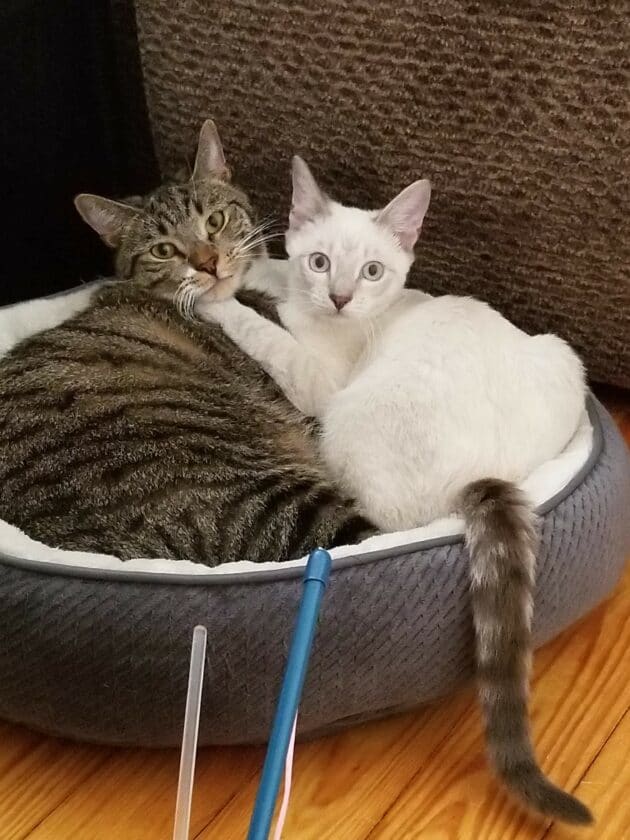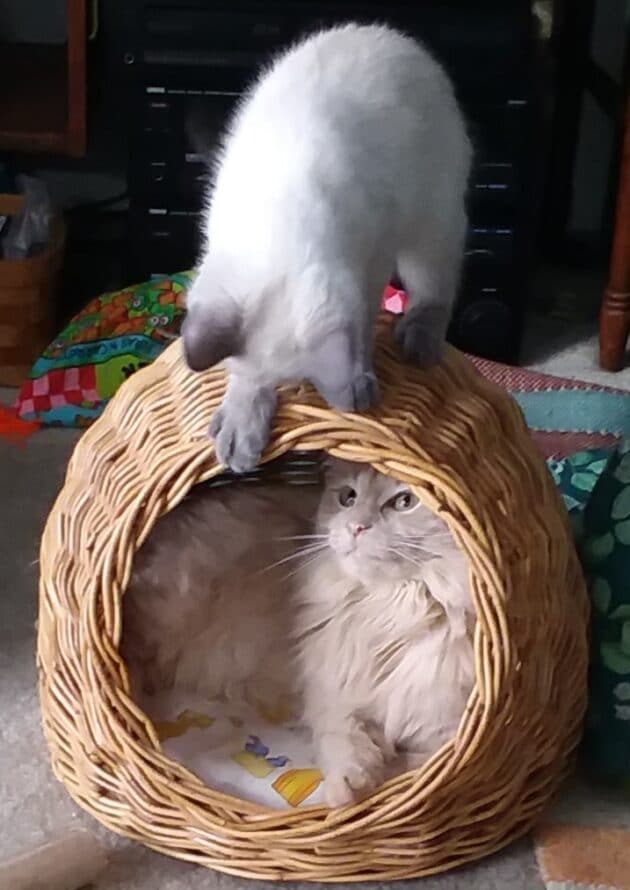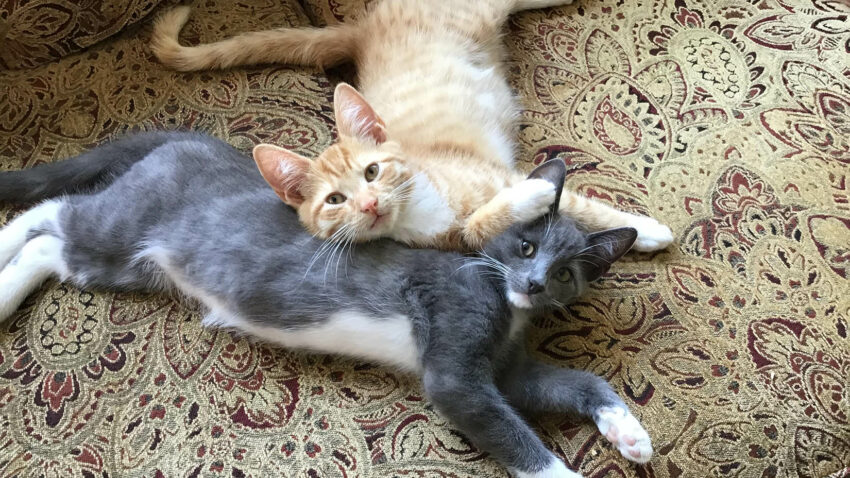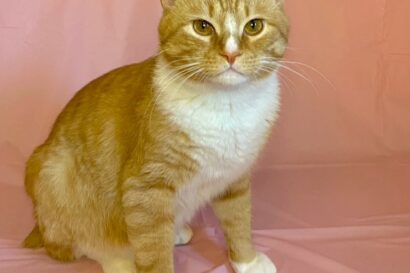
People who love cats, typically own more than one. In the perfect setting, all their cats would immediately get along with one another, living contently and sharing space with ease. Sorry to burst anyone’s bubble, but this is not the reality for most cat introductions. People bringing in a new friend for their feline should be prepared for initial management between resident cat(s) and the newbie.
First things first. While this is probably not something a person should say whose job is to find new homes for the felines in Monadnock Humane Society’s care, your cat likely doesn’t want a new friend. Cats are loners when it comes to their species. Outside of their familial relationships, cats are territorial and don’t like to share. So we all need to admit to ourselves bringing in a new feline is really for us and to feed our love for cats.
Now that that is out of the way, our focus can shift on what is important. In the ideal world, two cats would be the best of friends, hanging out when their people are gone, cuddling on the couch or grooming one another in the adorable cat bed for two. Instead, be realistic with expectations. The goal is to help them coexist with one another, decrease stress between both cats, and provide an environment that can accommodate both of their needs.
Right off the bat, believe us when we tell you to keep your cats separated from the new arrival. This is for at least one to two weeks of complete separation, with no visual contact between cats. When a new cat is plopped down in the middle of a new place, with resident animals present, a couple things happen. From the resident cat’s perspective there is a foreign intruder on his/her territory that poses a threat to all the resources—a feeling that is engrained in a cat’s nature.


From the new cat’s perspective, everything he/she has come to know as familiar has changed. From being introduced to new people, put in a carrier, driven in a car, then brought into this unfamiliar place with other animals, brings with it all kinds of stressors. New smells, new sounds, and new sights can completely overwhelm even a well-adjusted cat.
Setting the new cat up in their space will allow them to decompress from all the changes that are happening, and give the resident cat the peace of mind that their territory isn’t being completely overrun by the newcomer.
With a week or two of adjustment, cats have time to overcome the newness of the arrival. Everyone’s smell has permeated each other’s space, and the new sounds are no longer foreign or scary. Next step will be setting up a physical barrier between spaces where the cats can see one another but unable to physically interact. This may mean setting up baby gates or screen doors to create this barrier.
These controlled interactions will start off as short, positive moments between cats. This may include parallel play with the cats, or using treats as a positive reinforcement when interactions are neutral. These meetings shouldn’t be rushed for the sake of time. Successful introductions are those that take the needs of the cats into consideration first and foremost. If there are reactions from either of the cats, then things are moving too fast.
Over the course of a couple weeks, extend supervised meetings to longer and longer shifts. This will help your cats become more comfortable with one another while still feeling safe and secure in their spaces.

When controlled interactions are showing consistently positive reactions between cats and interactions are going on for longer periods of time, it is time to move onto supervised interactions. These occur when the physical barriers are removed and cats are able to investigate each other’s space. Again, it is important to build on these meetings, starting with short interactions and slowing building over the course of a few weeks. Reinforcing the good behavior of both cats through treats will help drive these positive meetings home.
Supervised interactions may have to go on for even a couple of months, until the owners are absolutely positive that the cats involved can cohabitate peacefully together. Sometimes this may never be feasible and cats will need to be separated when owners are not present to monitor.
While I wish it was easier to get cats to accept one another under one roof, the reality is that it isn’t. If we are determined to welcome multiple cats into our home, the wellbeing and nature of our cats needs to take top priority. Skipping or rushing through the introductions will only result in stressed cats and a lot more work on the owner’s end to rectify the already-damaged relationship.


